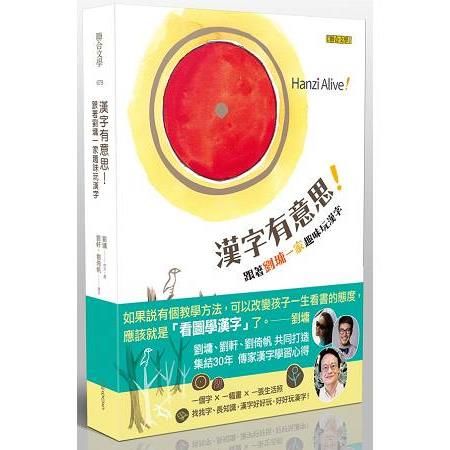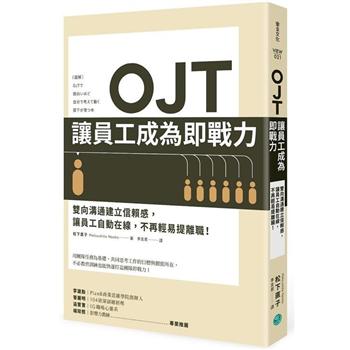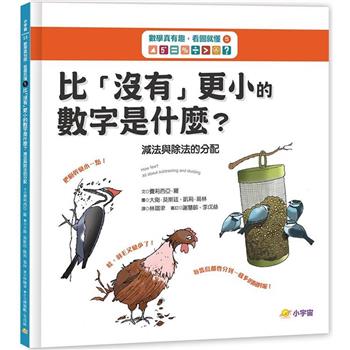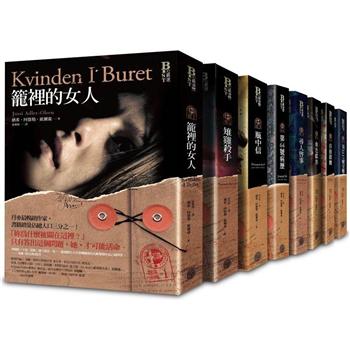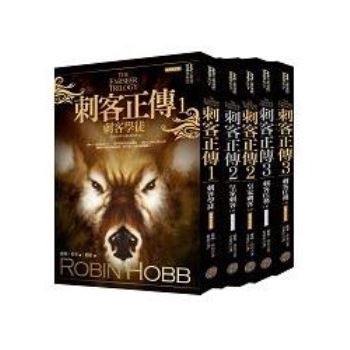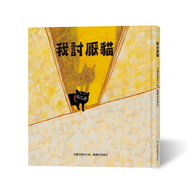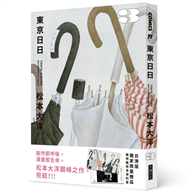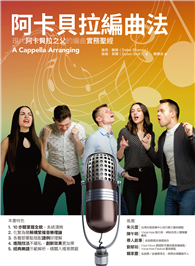如果說有個教學方法,可以改變孩子一生看書的態度,應該就是「看圖學漢字」了。
——劉墉
★劉墉分享這套傳家漢字學習法,劉軒、劉倚帆和孫子,從小都是這樣快樂地聽劉墉說文解字。
集結三十年 傳家漢字學習心得
劉墉、劉軒、劉倚帆 共同打造
欣賞漢字的美,回味文字的博大精深
一個字 × 一幅畫 × 一張生活照
找找字、長知識,漢字好好玩,好好玩漢字!
本書特色:
認識各體漢字,發掘文字起源,欣賞書法之美,探尋趣味典故,
學習中英語文,增添生活樂趣,立即學以致用!
Learn Hanzi etymology, appreciate calligraphy in its various forms, discover the origin of Chinese characters and the stories behind them, and find their use in daily life!
★書中有畫,畫中有字
每一個漢字,都有一幅劉墉手繪美麗的畫,手寫該字的「剪影」、「甲骨文」、「金文」、「小篆」到「楷書」,揭示漢字的誕生和演變過程,再加上深入淺出的生動中英文解說,孩子輕輕鬆鬆很快就能學會這個字。
★一個字一次捉迷藏,每個字都是尋寶
愈能用在生活中的學習方法,學起來就更簡單容易!
每一個漢字,都有一張取材自日常生活的照片當例子,讓孩子試著從照片找一找,找到這個字,會特別興奮,也會記得特別牢。以後上街看到招牌或餐館的菜單,隨時隨地都能學認字。
★圖像教法好記憶,增強聯想跟創意
當一個人用圖像記憶法學漢字,文字就不再生硬死板,非但可以幫助認字,而且能夠增加聯想,甚至由此加強創意。
★本書為中英文對照
本書英文由劉墉女兒劉倚帆從小邊學邊譯,經劉軒校正,盡力保持簡單易讀,適合孩子同步學習中英文。
劉墉:「過去幾十年,我總用圖像教漢字的方法做實驗。早年在美國大學教書,發現能讓洋孩子立刻愛上中文。後來生了女兒,用這套方法教ABC娃娃,居然也事半功倍,使她而今能在北京作中英文翻譯。而現在劉軒的孩子到了認字的年齡,也是用這一套方法學習漢字。」
作者簡介:
劉墉
聞名兩岸的畫家、作家、教育家。出版文學藝術作品一百餘種,被譯為英、韓、泰、越等國文字,在世界各地個展三十餘次。
Yung Liu
One of the most influential and popular writers of the Chinese speaking world, and also a renowned painter and educator, Mr. Liu has written over one hundred books of essays, prose, short fiction, inspiration literature and art analysis, and his books have been translated to English, Korean, Thai and many other international editions. As a painter, Mr. Liu has held more than thirty solo exhibitions throughout the world, and his artworks are regularly featured in Sotheby’s, Christie’s and other major auction houses.
劉軒
音樂家、作家、演說家及主持人,美國哈佛大學心理學碩士及博士研究,出版中、英、韓文作品十餘種。
Xuan Liu
Musician, writer, speaker, radio show host. Holds BA from Harvard University and M.Ed from the Harvard Graduate School of Education. He is also a classically trained pianist and one of the most in-demand DJs in Taiwan. As a writer, he has written eleven books and translated several other works.
劉倚帆
美國哥倫比亞大學畢業,賓州大學華頓商學院研究生。曾任美國華納兄弟娛樂公司中國區經理,出版英文翻譯作品兩種。
Yvonne Liu
Graduate of Columbia University and current MBA candidate at The Wharton School of the University of Pennsylvania. Former Manager of China for Warner Bros. Entertainment Inc. She as previously translated two books from Chinese to English.
作者序
【序】每個字都像童話故事 劉墉
Preface:Every word is an enchanted story/Yung Liu
我女兒大學剛畢業就應聘去了北京,很多人驚訝她這個美國土生土長的女孩,有那麼好的中文程度,不但能聽能說能寫,甚至兩岸的繁簡體字和拼音、注音都會,猜我一定下了不少工夫教她。其實她小時候,我不過每週抽出一兩個小時給她上課,可能因為教法不同,所以能事半功倍。
My daughter landed her first job in Beijing straight out of college. People often remark how impressive her Chinese is, considering that she was born and raised in the US. Not only is she fluent in both speaking and writing, but she is equally comfortable with traditional and simplified characters, and knows how to use the pinyin and zhuyin systems. Many think that this must have been the result of countless hours of toil and struggle, but actually it’s been no more than one or two hours of lessons per week since she was a child.
由於我愛藝術、文學,又在美國的大學教「東亞美術概論」,所以我教漢字是從「文字學的藝術」入手。漢字由象形符號發展出來,本來就具有圖畫的性質,像是日、月、水、火、舟、車、蟲、魚,跟圖畫像極了,任何娃娃都一看就懂,何必讓孩子從起步,就認為文字是死板難學的呢?
Looking back, I believe the lessons are more efficient because I made character learning as fun as possible. Art and literature are my personal and professional passions, and I used to teach East Asian art studies in an American university, so I have always approached Chinese characters as an art form. Chinese Hanzi characters originated as pictographs, and still retains much of their pictorial past; words such as sun and moon, water and fire, boat and cart, insect and fish, are still just like pictures that can be readily explained to any young child. There is no reason why we should let children think these words are abstract and difficult to learn.
所以我用畫的,長長一條橫線,是地平線,加上圓圓的太陽,是太陽剛冒出地平線的「旦」;尖尖一個屋頂,裡面坐了個女生,是平平安安的「安」。媽媽帶著一個娃娃,多好啊!所以是「好」;一隻手在推,不夠!又來一隻手幫忙,是朋友的「友」……
For example, if you draw a horizontal line representing the horizon, and add a circle on top as a rising sun, what do you think it would mean? The resulting character「旦」means exactly what it looks like: dawn! Or if you draw a pointed rooftop, and add a character for woman(女)under it, the resulting character「安」means“safe”. Put a woman and a child(子)together, and you get「好」, which means“good.” One hand pushing is not enough; add a helping hand, and you get「友」, which means“friend.” Modern words echo the values of the past.
由於文字經過長久地演變,現今使用的漢字,跟甲骨文和大小篆有很多不同。為了讓孩子能看出古人怎麼從觀察自然、創造文字,一步步演進到今天的樣子,我把真實的圖畫、刻寫的「甲骨文」、鑄造銘記的「金文」、秦代統一的「小篆」、方便記錄的「隸書」、文人獨特的「行草和,結構嚴謹的「楷書」,一個個排列起來。當孩子知道其中的變化,一方面會覺得有意思,一方面即使看到現今的繁體和簡體字,都能自然想到它們「當初的樣子」,那種追索的過程甚至有偵探和尋寶的趣味。
Still, having evolved through the centuries, modern Chinese characters can be markedly different from its original form. So, each word is presented first as a picture, then in its earliest written form on oracle bone shells, then as it was carved on early bronzeware, later as ‘small seal script’ used in the Qin Dynasty, followed by ‘clerical script’ developed for (obviously) clerical work, ‘cursive script’ used by artists and literati, to the structurally balanced and complex ‘regular script’. Arranged in sequence, it allows one to see how ancient Chinese people observed nature, created the words, and how it evolved through time. One can feel like an archeologist or a cryptographer, and knowing how the characters once looked thousands of years ago can certainly add to the appreciation of reading them today.
舉個例子,「采」這個字,上面是「手」,下面是「木」,手在樹上采,意思很明確,形象也簡單,只是後人在左邊又加了「一隻手」,成為後來的「採」。又譬如「本」字,中間直直一根樹幹,上面左右伸出兩根樹枝,下面伸出兩條樹根,在樹根的地方加一小劃,表示「根本」的道理。
As another example, the character 采 is a drawing of a hand on a plant, and later another “hand” was added on the left as a radical, forming the character 採, which means “to pick”.
If you draw a straight line as the trunk of a tree, horizontal lines as branches and slanting downward lines as roots, then add another small line near the base of the trunk, and the resulting character 本 means “source” or “root”.
為了讓寫實圖畫和文字元號的關聯更清楚,我除了畫圖,還用「剪影」。圖畫是彩色的,剪影是黑白的,前者比較複雜,後者比較簡化。譬如「犬」字,圖畫是一隻舉著前腳的狗,可能不容易和「犬」字聯想到一起,但是經過「剪影」,看來就有了緊密的關係。
To bridge the connection of written word and illustration even closer, I also depict the illustration as a silhouette; simplified into black and white, the pictures look more like the characters they became. For example, the character 犬 is of a dog lifting one front paw. As an illustration, it’s not that obvious, but through the silhouette process, you can see much more readily how the picture becomes the word.
此外,文字是實用的,孩子愈能用在生活中愈好。所以在我教漢字的時候,只要遇到有中文的場合,無論街上的招牌或餐館的菜單,立刻會指著字讓孩子認。我兒子原本不懂簡體漢字,跟我去大陸一個月,一路上看招牌認字,就學得差不多了。
Of course, the written word is a tool, and beginning learners should make use of it in daily life as much as possible for it to stick. Back when I taught my children, I would have them identify characters whenever we see them, whether it’s on a street sign or a restaurant menu. My son couldn’t read simplified Chinese at first, but after a month long trip through mainland China, he was able to learn it by reading all the signs.
所以我又用了一種方法,就是四處拍照,要孩子從照片裡找他認識的字。因為漢字全球化,我拍照的地點除了臺灣、中國大陸、香港,也包括日本、泰國、馬來西亞和新加坡等這些跟漢字關係密切的地方。我發現每個孩子都天生愛尋寶,當他才學幾個字,就能從生活照片裡找到,會特別興奮,也記得特別牢。
So in this book, I also use this method to teach character recognition, by taking photographs of Chinese characters throughout the world. In my experience, every child and beginning learner loves to hunt for the words they just learned in photographs and surroundings. Even if they only know a few characters, it’s very exciting for them to spot these words in life, and it certainly enhances their memory.
加上今天是個國際化的社會,最好讓孩子從起步的時候就能雙語溝通,我在教漢字的時候也以英文解釋,又為了讓孩子印象深刻,甚至讓他有成就感,每次都要孩子把我寫的中文翻譯成英文,而且放在這本書裡。所以這本書應該既適合西方人學中文,也可以作為中國孩子的英語教材。
Society in the future is ever more global, so I believe it’s best to develop proficiency in more than one language as early as possible. When teaching Chinese to my children and my students, I sometimes use English to explain. My children now are the ones who did the English translation for this book. I believe it can be a useful tool not only for English readers wishing to learn Chinese, but can work the other way around as well.
更進一步,雖然今天十三億人都用簡體漢字,而且簡體字比繁體字好寫得多,但繁體字是我們偉大的文化資產,就算筆劃多,不易寫,也應該懂。所以我在教孩子的時候是繁體、簡體,甚至「注音」、「拼音」一起進行的。
In addition, I believe in learning both the traditional and simplified characters together, and I have taught my children to use both the pinyin and zhuyin phonetic systems. Although simplified characters are the norm for the majority of Chinese, the traditional (also known as ‘complex’) script is a cultural heritage in itself. They may have many more strokes and take longer to write, but it’s still worthwhile to study and appreciate them.
或許正因為從「圖像」、「剪影」、「符號」,到文字演進一路教下來,非但能加深印象,收事半功倍的效果,孩子也在自然間感受書法的美。我相信如果每個人都能從漢字源頭上學起,以後認字的方法和趣味會大大不同,文字不再只是死板的符號,而是生動的圖畫或故事。
In this sequence of learning a word through pictures, silhouettes, symbols to text, I believe that the impression will be deeper, and beginning learners can naturally begin to appreciate the beauty of calligraphy as well. I truly believe that if everyone can learn Chinese characters by studying their source, the written language itself will come alive.
這本書的各體漢字和插圖都是我繪製的,我原本可以從字典或電腦檔案裡直接取用文字,但為了親自體會漢字的美,還是一筆一劃地臨寫,由於書寫的時間不同,或許有好有壞,請大家諒解。
All of the illustrations and calligraphy in this book were done by yours truly. I could have sampled from reference books or computer fonts, but still decided to write them by hand, so the reader can more fully feel their organic beauty. Since they were done over different periods of time, their quality may be slightly different, and I apologize for their imperfection.
至於英文,如前面所說是由我女兒邊學邊譯,當年她還小,英文能力有限,所幸這是寫給小朋友的書,英文太深奧反而不好,所以雖然後來經過劉軒校正,仍然盡力保持原樣。
The English translation of the text was first done by my daughter. At the time of the first draft, she was still quite young, and her prose not so polished, but as this is a book meant for beginning learners and children, I thought it best to keep the language simple. My son later did some editing, but mostly kept the translations as they were.
這本書雖然不大,前後卻花了多年時間,直到女兒上大學才停止,因為需要補足考證,我的教學工作又忙,結果一拖再拖,差點半途而廢。所幸而今孫子女到了認字的年齡,逼我重拾舊業、野人獻曝,把我教學的心得與大家分享。我不是專業的文字學家,同一個字也可能有各家不同的解釋,闕誤之處在所難免,請大家不吝指教!
This book is not big, but has been a long time coming. I worked on it as a family project, all the way until my daughter left for college. In the meantime I kept busy with other things, and some of the material had to be more fully researched, causing further delays that almost stalled the project completely. Luckily, my grandchildren are now at the age to learn Chinese characters for the first time, which motivated me to pick up where I left off, and I now humbly present this work to you. I sincerely welcome your comments, and hope that learners of Chinese everywhere, young and old, may enjoy and benefit from this book!
【序】每個字都像童話故事 劉墉
Preface:Every word is an enchanted story/Yung Liu
我女兒大學剛畢業就應聘去了北京,很多人驚訝她這個美國土生土長的女孩,有那麼好的中文程度,不但能聽能說能寫,甚至兩岸的繁簡體字和拼音、注音都會,猜我一定下了不少工夫教她。其實她小時候,我不過每週抽出一兩個小時給她上課,可能因為教法不同,所以能事半功倍。
My daughter landed her first job in Beijing straight out of college. People often remark how impressive her Chinese is, considering that she was born and raised in ...
目錄
目次▕ Table of Contents
【序】每個字都像童話故事 劉墉
Preface:Every word is an enchanted story/Yung Liu
本書的使用方法 How to use this book
漢字有意思 Hanzi Alive!
漢字是怎麼演進的 The evolution of Hanzi Characters
目次▕ Table of Contents
【序】每個字都像童話故事 劉墉
Preface:Every word is an enchanted story/Yung Liu
本書的使用方法 How to use this book
漢字有意思 Hanzi Alive!
漢字是怎麼演進的 The evolution of Hanzi Characters

